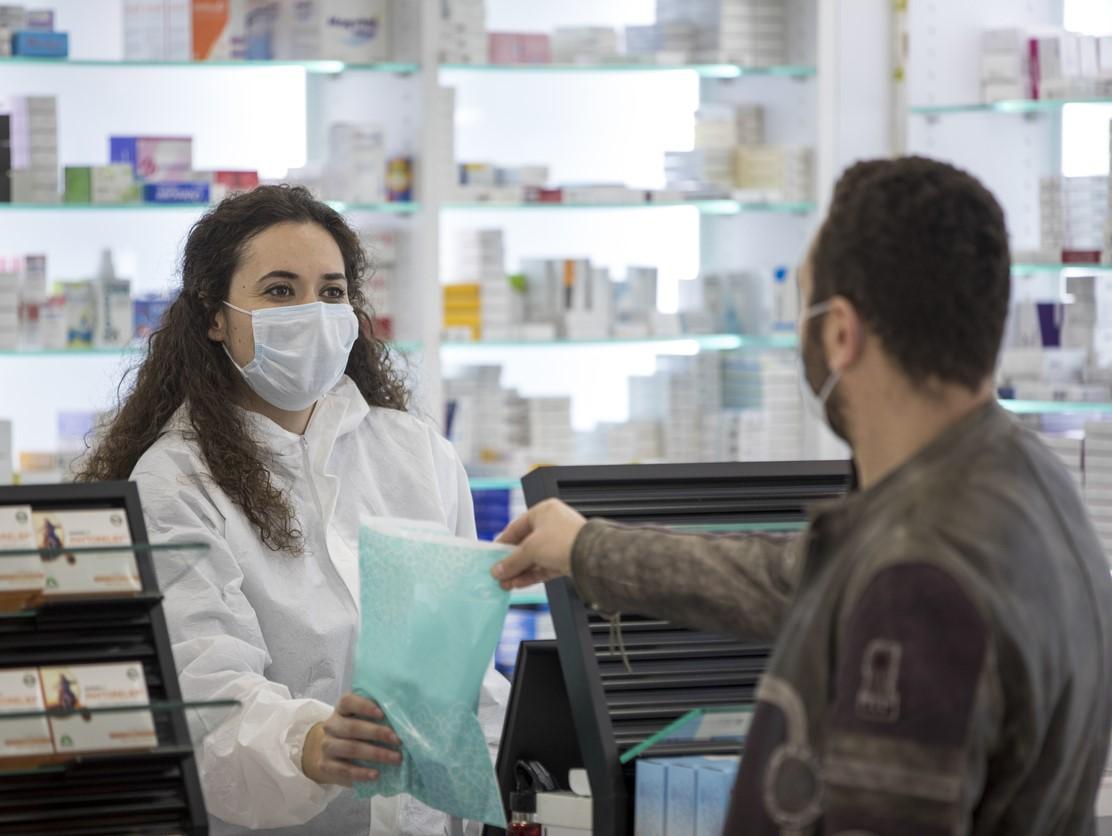When the first cases of COVID-19 were identified in the spring of 2020, there was little to no guidance on how to treat them. Two research letters published last week in separate JAMA journals looked at how drug dispensing in US retail pharmacies and Italian hospitals changed as more information came to light—and, not surprisingly, they reveal early demand for drugs promoted with little evidence for their efficacy.
The studies reported increased demand for the malaria drugs hydroxychloroquine and chloroquine, the anti-parasitic ivermectin, the antibiotic azithromycin, and the antiviral combination lopinavir-ritonavir, an HIV drug. They also showed high demand for zinc and vitamin C.
Both teams of researchers found a similar progression in which, after a period of uncertainty due to lack of available data, providers began prescribing more drugs recommended by national disease and medicine agencies. The Italian study highlights the risks of self-medication and "panic buying."
US spikes in ivermectin, zinc, hydroxychloroquine
To examine the US retail pharmaceutical market, researchers in the first study, published in JAMA Internal Medicine, used the IQVIA National Prescription Audit Weekly, which covers approximately 92% of all retail prescription activity.
From Mar 14 to Dec 18, 2020, the study followed 17 potential COVID-19 treatments as listed by the National Institutes of Health's (NIH's) "COVID-19 Treatment Guidelines" and the American Society of Health-system Pharmacists' "Assessment of Evidence for COVID-19–related Treatments."
The researchers measured for peaks and inflection points any time a prescription was being ordered at 50% or higher rates above pre-pandemic times. Ivermectin, chloroquine, zinc, and hydroxychloroquine had the highest percentage changes in dispensed prescriptions during a peak week at 583.4%, 494.4%, 403.3%, and 185.5%, respectively, with ivermectin peaking twice.
The longest time a prescription stayed at least 50% above its baseline was 32 weeks (zinc), followed by 30 (vitamin C), and 12 (ivermectin).
The week ending on Mar 20, 2020, saw the most dispensing peaks, involving nine drugs, including ivermectin—its first of two despite never being recommended by the NIH. Zinc also peaked twice during the weeks ending Apr 10 and Aug 7 before rising again through Dec 11 despite its lack of NIH endorsement.
A third non-endorsed drug, dexamethasone, actually decreased in dispensing in mid-March before increasing to 25% above baseline at the end of July and then above 50% through mid-December. The researchers say that these three trends follow COVID surges across the nation.
In contrast, hydroxychloroquine, chloroquine, and lopinavir-ritonavir's peaks during COVID-19 case increases in March and April 2020 did not recur, because studies showed the drugs' lack of efficacy, the researchers write.
"These trends in prescribing practices suggest that clinicians consider the most recent recommendations from the National Institutes of Health and the US Food and Drug Administration before prescribing unproven therapies for COVID-19 to outpatients outside of clinical trials."
In Italy, best practices evolved with the evidence
The researchers studying Italy's early response to the COVID-19 pandemic identified three hospital treatment phases, as they detail in JAMA Network Open.
The first, in March 2020, found healthcare providers making treatment decisions based on relatively little evidence. The second, beginning in April, demonstrated that randomized clinical trials were beginning to provide better evidence-based best practices. And then in May, according to the researchers, "The epidemic curve was flattened and COVID-19 treatment approaches were reshaped on the basis of preliminary trial results."
The researchers came to these conclusions by looking at the demand from December 2019 to May 2020 for 19 COVID-related prescriptions as reflected by the Italian Medicines Agency, clinical trials, or general demand increases. Hydroxychloroquine, lopinavir-ritonavir, azithromycin, tocilizumab, and hospital-used injectables were included in the study, but drugs that were part of a pharmaceutical-sponsored compassionate program (notably, remdesivir) were not.
Public hospitals saw the largest absolute demand surges for azithromycin, hydroxychloroquine, and tocilizumab, which increased 7.57, 6.01, and 0.21 average monthly packs per 100,000 people per day, respectively. (By percentages, hydroxychloroquine, azithromycin, lopinavir-ritonavir, and colchicine had the highest demand surges at 4,661.7%, 195.4%, 97.6%, and 70.4%, respectively, although the latter only had a 0.02 absolute difference in monthly packs per 100,000 people.)
As for community pharmacies, the highest absolute difference in drugs covered by the National Health Service was for hydroxychloroquine (2.48 monthly packs per 100,000; 35.2% relative change). The highest demand surges for drugs paid out of pocket were anxiolytics (8.89; 3.8%) and hydroxychloroquine (7.61; 111.8%). Ascorbic acid (vitamin C) had only a 0.55 absolute difference increase in monthly packs per 100,000, but it rose 34.1% in relative demand, whereas vitamin D and analogues increased 4.67 monthly packs per 100,000 but had only a 2.9% relative difference.
"Risk of self-medication and panic buying is concerning," the researchers write, adding, "The results of the study underscore the importance of routine drug utilization monitoring as a useful tool to timely record quantitative and qualitative changes in demand for drug prescriptions."






















